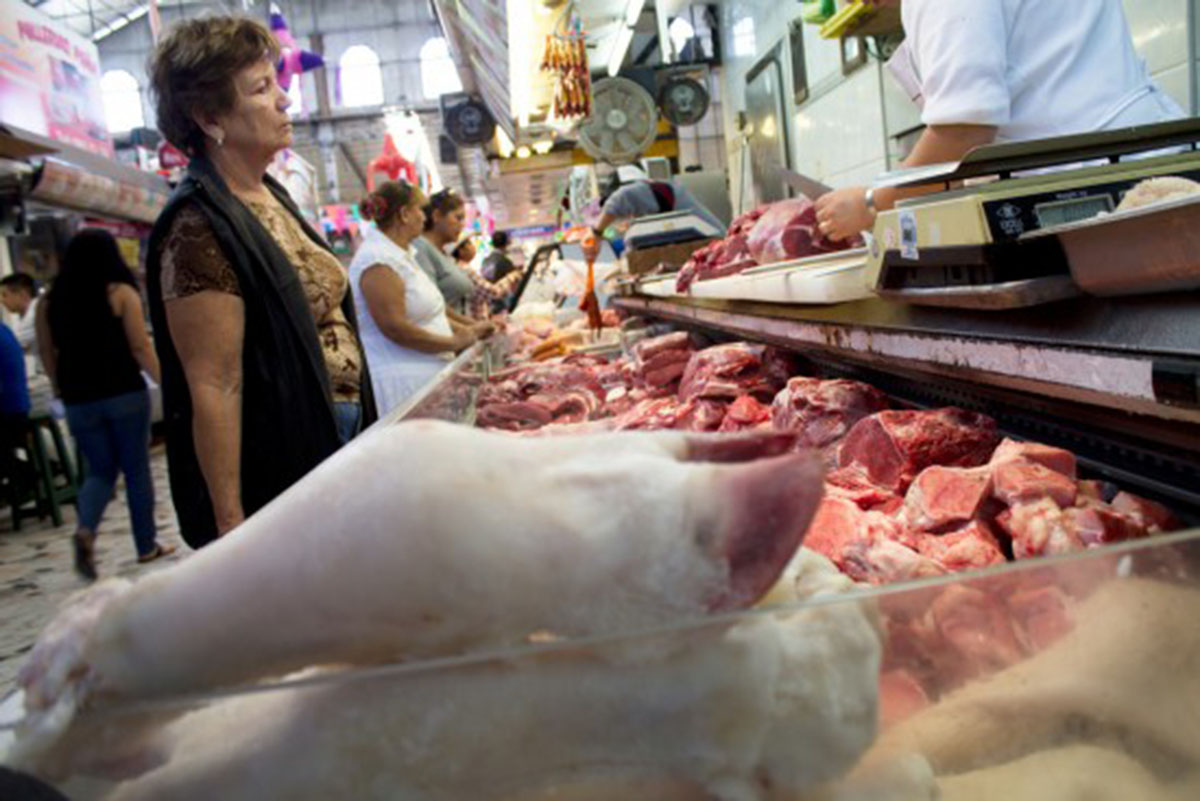What could be a more primal diet than eating lots of meat? Most devotees of paleo diets, Mark Sisson's Primal diet, and Drs. Paul and Shou-Ching Jaminet's Perfect Health Diet are sure that eating meat is the way to go, but the simple fact is that some meats are better than others.

What Could Be Toxic About Meat or Fish?
A few protein foods are obviously toxic, for example, blow fish, puffer fish, or fugu. There are also certain kinds of South American frogs that should not even be touched, much less eaten. And there are a few kinds of meat, such as chicken grown in giant coops, cattle finished on feedlots, and hogs raised in giant crowded pens that just shouldn't be eaten because of the environmental ills associated with their production.
However, the kinds of toxins that appear in the meat and fish most of us eat every day are more subtle. Some toxins are added by industrial agriculture. Other toxins are added in preparation and processing. And still other toxins are inherent in the meat itself.
Toxic Agriculture
As surreal as it may sound, poultry producers hired laborers whose only job was to put the teeny tiny contact lenses in the eyes of young chickens so that they would fatten up faster. At least you weren't likely to find a contact lens in your bucket of KFC.
However, in the twenty-first century consumers actually are exposed to a variety of medications given to chickens when they eat most brands of supermarket chicken. Birds are given Benadryl (diphenhydramine, the allergy medication) to sedate them in their cages. If you feel a little drowsy or droopy after you eat chicken, maybe your body is responding to the Benadryl in the bird.
You would have to eat enormous amounts of chicken to get arsenic poisoning, but there are other sources of arsenic in the modern American environment, and arsenic exposure adds up.
Chinese chickens show up in canned goods. If you have to eat canned chicken, maybe your life is generally depressing, but do you really want to get your medications from chicken salad?
Toxic Processing
Other meats can be made toxic during processing. Red meat, as will be explained on the next page, isn't as inherently unhealthy as was once understood. However, the processing of red meat and pork can be a major problem.
Read More: Safe Starches On A Paleo Diet
If you are on a paleo or primal diet, you already know about the problems with salt and sugar. The toxicity of the nitrates could be counteracted just by eating more foods that are naturally rich in vitamin C--except that sugar and nitrates combine in ways to produce advanced-glycation end products, the same toxic compounds that the body generates during diabetes.
That's part of the reason why people who eat lots of sugar-cured meats and lunch meats have a vastly higher rate of type 2 diabetes. It's important to steer clear of both factory-raised chicken and sugar-cured or nitrate-cured meats, even that paleo favorite, bacon. (Just eat bacon that isn't sugar cured or treated with nitrates.)
Healthy Fats, Toxic Fats In Meat
The other problem with meat is toxic fat. Oddly enough, the fats in meat that are most likely to become toxic are precisely the same fats that nutritionists have been telling us were good for us, the omega-6 essential fatty acids and the omega-3 essential fatty acids.

Just because a fatty acid is "essential" doesn't mean that consuming more and more of it is good. The omega-6's and omega-3's are a kind of fat that is classified as polyunsaturated. That means that it can react with oxygen.
We need just 0.6 grams (about one-eighth of a teaspoon) of omega-6 fat every day if we get enough omega-3 fat, about 2 grams (one-half a teaspoon a day).
Most Americans get 20 grams of omega-6 fat every day, but less than 1 gram of omega-3. This means our bodies pump out the hormones that the immune system uses to generate inflammation to fight infection, but they don't make the hormones that turn the process off. Americans get omega-6 fat from soybean oil in all kinds of packaged snacks and pastries, and if you are on a paleo diet, you know not to eat those foods. But you may not be aware that you also get omega-6 fat from meat, and that unneeded omega-6 fat can cause a variety of problems.
When we consume too much omega-6 fat:
- We gain weight out of proportion to calorie consumption.
- We raise our cholesterol levels, as the body converts the omega-6 fat it can't use into cholesterol.
- We increase the likelihood that our bodies will convert cholesterol into the form that causes plaques.
- We become more prone to conditions of chronic inflammation, such as allergies, runny noses, and skin allergies when we are younger, and Alzheimer's disease, cancer, Lyme disease, multiple sclerosis, and Parkinson's disease when we are older.
So it's a good idea to consume meats that aren't especially high in omega-6 fat. Those happen to be, oddly enough, beef and lamb. Chicken and "the other white meat" pork contain less fat, but they contain more omega-6 fat.
Other protein foods that are especially high in omega-6 fat include (in descending order of percentage omega-6 fat) shrimp, dark meat chicken, light meat chicken, skinless chicken breasts, ham, roasted duck, and tilapia.
Read More: The Truth About Paleo Diets
Protein foods that are relatively low in omega-6 fat include(again, in descending order of percentage of omega-6 fat)
- Institutes of Medicine. Dietary reference intakes for energy, carbohydrate, fiber, fat, fatty acids, cholesterol, protein, and amino acids. Washington, DC: National Academics Press, 2002.
- Micha R, Michas G, Lajous M, Mozaffarian D. Processing of meats and cardiovascular risk: time to focus on preservatives. BMC Med. 2013 May 23. 11:136. doi: 10.1186/1741-7015-11-136. PMID: 23701737.
- Photo courtesy of Michael Newton by Flickr : www.flickr.com/photos/newton/935117642/
- Photo courtesy of Sonya by Flickr : www.flickr.com/photos/sonya/6941711637/


Your thoughts on this